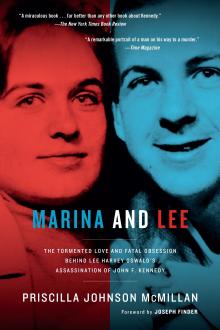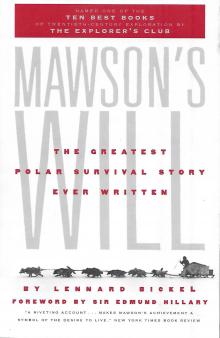Excerpt
Dedicated to first responders
and every person who steps up
to act when it matters
PART 1: JANUARY 13, 1982
9:00 A.M.
Washington, DC is a place unlike any other in the United States. It is a city of marble monuments and national treasures, the setting for spectacular neoclassical architecture and awe-inspiring panoramas.
Founded in 1790 as the national capital, the federal district was carved out of land ceded from two states; Maryland and Virginia. At one time 100 square miles in area, it straddled the Potomac River at the confluence with the Eastern Branch, now known as the Anacostia River. Virginia’s portion of the District of Columbia, 32 square miles including the city of Alexandria, was returned to the state in 1847.
Designed for the purpose of government, the District of Columbia is home to the White House, the Capitol, the Library of Congress, the Smithsonian Institutions, and a panoply of federal agencies and departments from agriculture to the National Zoo. Washington is the stage for the dramas of politics, diplomacy, and power.
Washington is also a place of work, primarily the work of government. More than three hundred and forty thousand federal workers are employed in the District of Columbia – cogs and gears in the vast alphabet engine that keeps the government functioning. Countless thousands of others work in Washington for trade groups, government contractors, think tanks, and a multitude of organizations and associations.
Washington is the epicenter of one of the highest cost-of-living regions in the country, and few who work in the city actually live in it. People commute to Washington by road and by rail from the suburbs and beyond. The city’s population swells and ebbs by the hundreds of thousands every weekday, a pulsating lifeblood of labor.
The men of the DC Fire Department’s Engine Company 16 are unimpressed by the picturesque magnificence of the nation’s capital. Iconic landmarks blend in as a routine part of the everyday cityscape. Firefighters have little time to reflect on their stately surroundings while racing to a fire or accident. To them, it’s just a job. From the biggest city to the smallest town, a firefighter’s work is essentially the same. In its simplest terms, put the wet stuff on the hot stuff.
Sgt. Joe Dean and the four other members of the Engine 16 crew were among more than a hundred firefighters and 30 pieces of equipment at the scene of a 3-alarm fire at the former Upshur Street Clinic in NW Washington on this Wednesday morning.
For more than 30 years the Upshur Clinic had provided medical care to indigent Washington residents. After it closed in 1980, the 5-story brick building fell prey to vagrancy. An arsonist set a fire that quickly consumed the decrepit building in a blazing conflagration.
The first alarm was received just before 3:00 a.m. Fires at night are often the worst because people are asleep, giving the flames a long head start before being detected. Nearby buildings are often occupied by families displaced by smoke or the drench of fire hoses.
The Upshur Clinic fire rapidly became so dire that the fire department activated its loathed Plan E – an emergency mobilization that keeps the present shift on duty and calls in the next shift early, temporarily doubling the number of personnel on duty. Plan E is only implemented in extreme cases to ensure sufficient resources are in place to protect the rest of the city during a major incident. Firefighters poured water on the building in wind chill dipping into single digits. One firefighter suffered frostbite and was taken to MedStar Washington Hospital Center for treatment.
By mid-morning, when it was time to return to their station on 13th Street, Dean and his men grappled with frozen fire hoses too stiff to load back onto the engine. It was the second night in a row with a massive multiple-alarm fire in bitter cold weather, a combination both exceedingly unpleasant and dangerous for firefighters. This was the coldest, most inhospitable weather Dean could recall in his thirteen years on the job.
What he and the crew of Engine Company 16 could not know was that they were only a third of the way through what would be the busiest 24 hours in the history of the DC fire department.
Huge swaths of the country were in the grips of a historic winter storm. A dip in the jet stream blasted arctic chill over the Midwest and East Coast. Chicago and Atlanta recorded their lowest temperatures of the twentieth century. The cold snap brought record cold to Florida, destroying $500 million in citrus crops. Three days earlier, on Sunday the 10th, the San Diego Chargers played against the Cincinnati Bengals in Riverfront Stadium for the 1981 AFC Championship in the coldest game in NFL history — an air temperature of -9 Fahrenheit with a wind chill that made it feel like -59 F. Washington’s National Airport documented a temperature of -2 F, breaking a record low that had stood for 40 years. It was a rare winter in which the Potomac River froze over with ice several inches thick.
During the second week of January, blizzards dumped snow on large stretches of the country, as far south as Alabama and Georgia. Several inches of snow remained on the ground in Washington, covering streets with sloppy slush.
Another major storm system was menacing the East Coast. A trough of low pressure was churning up from the Gulf of Mexico, an immense mass of warmer, humid air barreling northeast toward the Mid-Atlantic.
The National Weather Service, a unit of the Department of Commerce based just outside of Washington in Silver Spring, Maryland, issued a forecast for a mixture of sleet and snow beginning in the morning and increasing in intensity during the afternoon, with a total new accumulation of 6 to 8 inches expected by day’s end.
Foul weather delayed morning commuters relying on the Washington Metropolitan Area Transit Administration (WMATA) Metrorail subway system, popularly known as Metro. Snow and ice prevented doors from closing, interfered with traction or “third rail” power pickup, and caused other mechanical problems forcing 27 trains out of service during the morning peak ridership period. Delays rippled throughout the system. It was shaping up to be the most chaotic day in Metro’s six years of operation.
Metrorail was the latest of a new generation of urban rail systems developed after World War II, along with the Bay Area Rapid Transit (BART) system in San Francisco, which became operational in 1972, and the Metropolitan Atlanta Rapid Transit Authority (MARTA) subway system that opened in 1979.
WMATA’s Metro, like BART and MARTA, was a state-of-the-art computerized rail system designed for automatic control and operation, intended to run safely and efficiently with a minimum of human involvement.
Washingtonians embraced Metro when the subway began operating in 1976. Architect Harry Weese designed visually dramatic underground stations for the system, which featured coffered concrete barrel vault ceilings that created awe-inspiring cavernous spaces. Wide platforms allowed the flow of large numbers of people. Tickets were dispensed by vending machines to minimize lines. An attendant at each station was available for assistance if needed. Metro was the model of a modern urban rail system; clean and safe with a grandeur suited for the nation’s capital.
From an initial 4.2-mile rail segment with five stations between Farragut North and Rhode Island Avenue, Metro expanded into a nearly 40-mile system with 43 stations on three color-coded routes and an average of more than 290,000 riders per day.
The nerve center of Metro was the Operations Control Center (OCC), a windowless bunker-like room in WMATA’s basement. The entire rail system could be monitored and controlled from the OCC. A bank of eight cathode-ray tube (CRT) monitors displayed the status of every train and every point in the system. Facing the monitors was a three-sided wraparound console with a constellation of buttons and switches that would look at home in the control room of a nuclear power station.
The center console had panels to run trains remotely, operate switches to move trains from one track to another, and control power to the third rail for maintenance workers. To the right were panels for mobile radio communication with Metro supervisors and train conductors, and the public address system for each station. On the left console were panels for alarms and a printer to maintain a continuous log of events.
From this console, personnel known as controllers monitored trains throughout the system. If necessary, a train could be operated remotely from the OCC and safely advanced to the next station. When the system was working perfectly, humans weren’t needed at all.
The Metrorail system was designed around computerization. Computers continually monitored fare and ticket collection, keeping track of how many riders were in the system at any moment.
Trains could be operated in full automatic mode with the assurance of efficiency and safety. Full automatic mode put computers in control of the speed of trains, the distance between trains, the time of arrival at a station, and how long a train remained at a station. When trains were running in full automatic mode, a conductor was only needed on board to open and close doors and make announcements.
The OCC was designed for equipment, not for the comfort of humans. When running smoothly, one controller could monitor the system and take over to run it manually if necessary. On this day, the OCC was cramped for space with the addition of a supervisory controller Kenneth Banks, assistant superintendent Paul Hobgood, Jr., and superintendent Joseph Earl Taylor — all scrambling to move trains and buses around to get the system back to normal status.
By late morning, Washington-area streets were slick with a mixture of sleet and freezing rain topped with a thickening layer of steadily falling snow.
Covering the weather was Chester Panzer’s first assignment of the day. A videographer for WJLA-TV, Washington’s ABC affiliate television station, Panzer was tasked with recording winter scenes for the noon news. He drove the station’s crew car, an unmarked brown Oldsmobile sedan with a whip antenna mounted on the trunk, to pick up his soundman, George Patterson, at his home in the Washington suburbs.
Panzer and Patterson had worked together as a team for about a year in WJLA’s public affairs and documentary unit. Due to staff shortages, they were temporarily reassigned to the news division. This was their second day back in news, using somebody else’s vehicle and equipment. Although all the cameras and recorders were the same makes and models, each device had its own quirks and idiosyncrasies. It takes time to get used to unfamiliar gear. But the assignment was an easy lift; simple bread-and-butter visuals to run in the background while the anchor delivered the news.
Both Panzer and Patterson had experience as videographer and as soundman, so they took turns with the roles. Today Panzer was working the camera. Patterson’s job was to carry the 15-pound video recording unit, slung from a strap across his shoulders, and hold a shotgun microphone to capture interviews and ambient audio.
The two spent time in the suburbs of Northern Virginia recording residents shoveling sidewalks and brushing off cars, idyllic snowscapes, and cars sliding through slush. Panzer then drove the crew car to the TV station at 1120 Connecticut Avenue, midway between Dupont Circle and the White House, and delivered the video on a 3/4-inch cassette tape.
After a quick lunch, the assignment desk sent Panzer and Patterson to cover a house fire in Rockville. Upon arrival, they were surprised to find the house still fully engulfed in flames even though they had driven a considerable distance. Usually, fires are under control or extinguished by the time the press is on the scene. But firefighters had problems with frozen hydrants and difficulty getting water on the fire.
Panzer and Patterson had their own problems. After removing the equipment from the trunk, Panzer plugged a 9-foot cable into the back of the video camera and handed it to Patterson to plug the other end into the recording deck. The camera hoisted on his shoulder, Panzer put his eye to the viewfinder and hit the Roll button at his fingertips. There was no flashing red light to indicate that the deck was recording. Frustrated, they switched the cable for another type that required the soundman to press the Record button on the deck. Still nothing. Patterson looked down and saw that the connector had fallen off the cable, which was detached and spooled on the ground. They found a third cable that finally worked and recorded firefighters dousing a house still in flames.
On the way to bring the tape to WJLA, Panzer wondered what other challenges might be lurking ahead for them. He could not have imagined that by day’s end he would record a riveting life-and-death drama broadcast around the world.
1:00 p.m.
Cleared of the Upshur Clinic fire scene, Engine 16 returned to its station at 1018 13th Street NW. Dean supervised the crew as they wiped down the equipment and replaced tanks of compressed air on the Scott breathing apparatus. Hoses were laid out on the firehouse equipment room floor to thaw so they could be reloaded onto the vehicles, while everyone looked forward to the warm lunch that was being prepared upstairs.
Engine Co. 16 was the largest firehouse in Washington. Known as the “Big House,” the three-story brick Colonial revival station stood out against the neighboring classical architecture. It was the only station with four equipment bays — room for Engine 16, aerial truck Tower 3, Ambulance 16, a battalion chief, and the deputy chief of operations.
The second floor of the station housed the living quarters, along with a kitchen and a rec room with a television set. The third floor the station, where the fire department operated its own medical clinic, could be accessed through a separate entrance in the back. The facility included doctors’ offices, an operating room and recovery room, and a dental clinic. Police officers and firefighters could get work-related injuries treated at the clinic, as well as physical exams tied to their jobs.
Caught up with his tasks, firefighter John Leck leaned against the heavy wooden doors of Engine 16 bay and looked out the window. Snow was falling so heavily he could barely see across 13th Street. He watched cars slowly wending through a swirling mass of flakes.
“It’s snowing like a mother out there,” Leck muttered to himself. Not a good day to be going anywhere.
It’s just as well. Because of Plan E, he wasn’t going home anytime soon.
* * *





